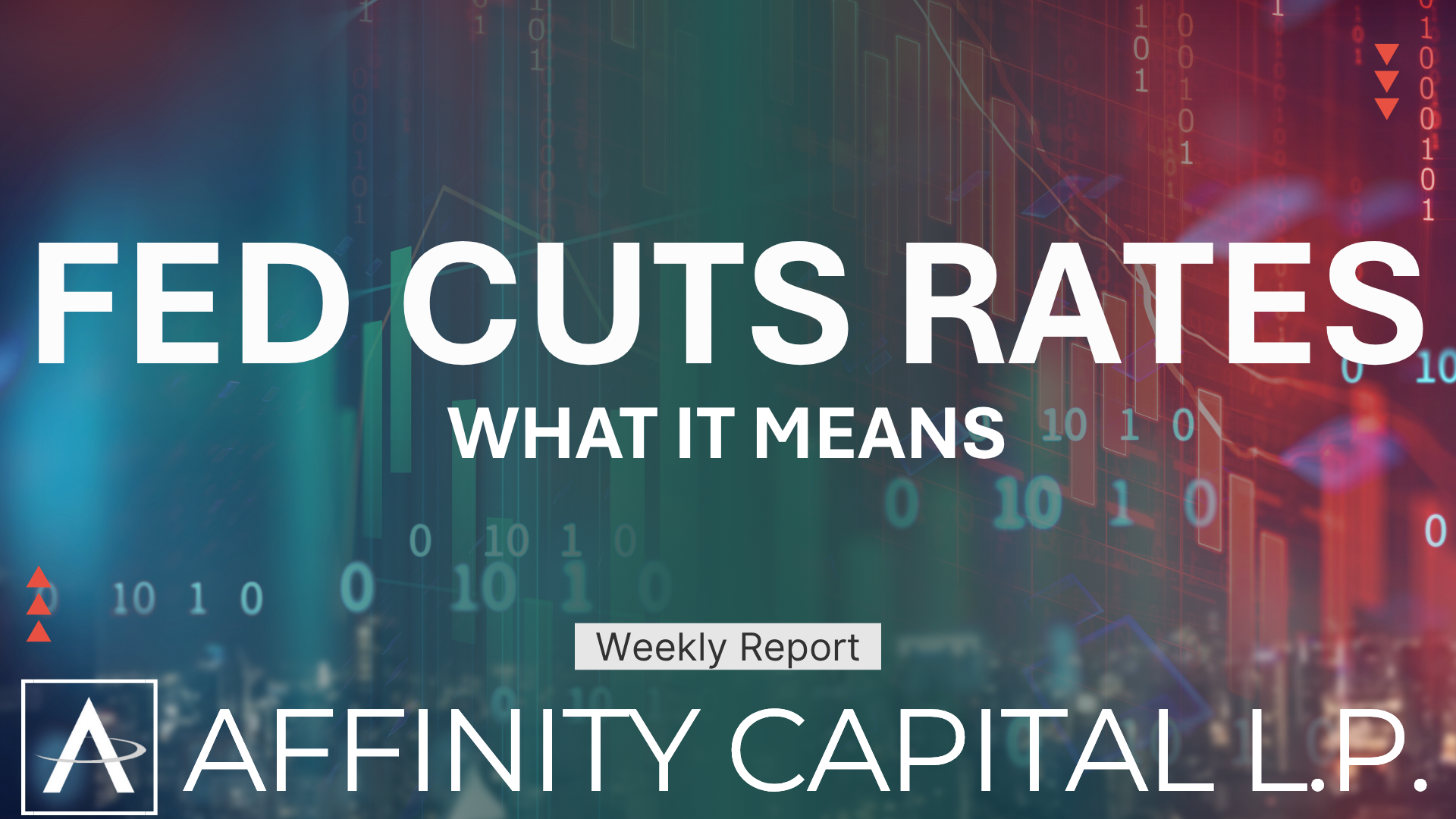How Tariffs Affect Your Investments

Throughout the first quarter we have been selling mostly technology-related positions and building up cash in our client accounts, averaging 25% - 30%. As noted in our previous Affinity Capital Market Flash of March 10 th Market Flash | Affinity Capital , our view on the major market indices was as follows:
- The tech-heavy Nasdaq will likely see another 5% to 9% downside.
- The Dow Jones Industrial Average has reached a support level. While we would like to see it hold here, the next drop could be another 4.5% to 5 %. For perspective that would be in the area of another 2000 points to the downside – which sounds a bit scarier than 5%
- The S&P 500 may see another 5% to the downside.
The futures markets for tomorrow's opening are significantly down as we write this, although we expect major volatility in the overnight markets. With futures this volatile, they can swing from negative to positive throughout the night. We will be rebalancing portfolios in the next few days and have been preparing for months to reshape our asset allocations to be ready for another leg down in the markets. Many positions will be rebalanced and new positions added, some of which may be partial purchases that we may add to, with further market deterioration .
Our long-term outlook for the markets remains positive and this correction provides long-term opportunity.
Factors Driving the Markets
This week, the stock market has experienced significant volatility, primarily driven by the President's announcement of new tariffs today. These tariffs include up to 20% levies on all imports to the U.S., with targeted increases on goods from China, Canada, and Mexico, as well as additional duties on cars, steel, and aluminum. The administration asserts that these measures aim to bolster domestic manufacturing and address perceived unfair trade practices. However, economists and business leaders have expressed concerns about potential economic fallout, including trade wars, inflation, and a possible recession.
In response to these developments, major stock indices have exhibited sharp movements. On Monday, March 31, the S&P 500 rose 30.91 points (0.6%) to 5,611.85, and the Dow Jones Industrial Average increased by 417.86 points (1%) to 42,001.76. Conversely, the Nasdaq Composite declined by 23.70 points (0.1%) to 17,299.29. These fluctuations reflect investor uncertainty regarding the potential impact of the tariffs on various sectors.
Certain sectors and companies have been notably affected. The technology sector, initially showing resilience, faced reversals as trade tensions escalated. For instance, Apple Inc. (AAPL) saw its stock price reach an intraday high of $225.175 before closing at $224.01, reflecting a modest increase of 0.37%. Similarly, Amazon.com Inc. (AMZN) experienced a 2.42% rise, closing at $196.82, after fluctuating between $187.48 and $198.28 during the day. Tesla Inc. (TSLA) demonstrated significant volatility, with its stock surging by 5.52% to close at $283.27, following an intraday low of $251.56. These movements underscore the market's sensitivity to policy announcements and the broader economic implications.
The energy sector also felt the impact, with Exxon Mobil Corp. (XOM) experiencing a slight decline of 0.4%, closing at $118.56. This dip reflects broader concerns about how tariffs might affect global supply chains and energy markets.
Beyond equities, other financial markets responded to the tariff news. Gold prices surged to record highs as investors sought safe-haven assets amid the uncertainty. Conversely, cryptocurrency markets weakened, and Treasury yields plunged due to increased demand for safer investments.
Looking ahead, the market is likely to remain volatile as investors digest the implications of the new tariffs and anticipate potential retaliatory measures from affected countries. Upcoming economic data releases, including the Consumer Price Index (CPI) and initial jobless claims, will be closely monitored for signs of inflationary pressures and labor market health. Additionally, corporate earnings reports in the coming weeks will provide further insights into how companies are navigating the current economic landscape.
As always, we welcome your questions and are here to support you. At the heart of everything we do is our commitment to "Wealth Management for Life"—providing enduring guidance for you and your family’s financial success.



